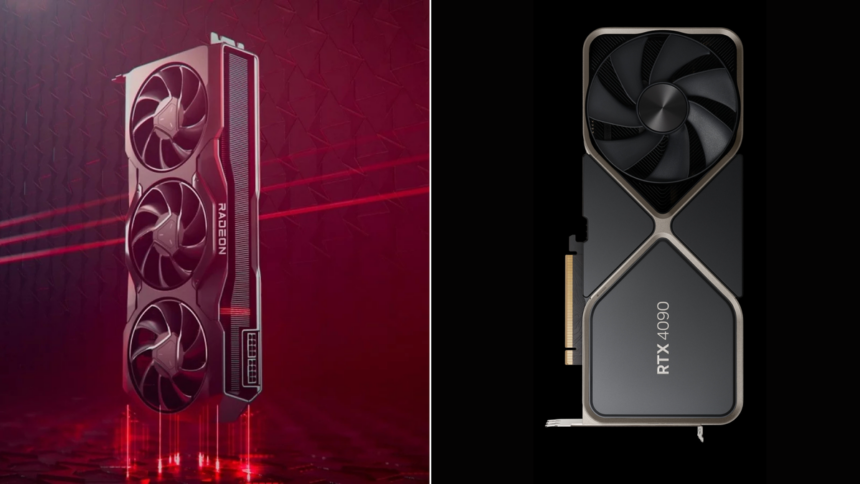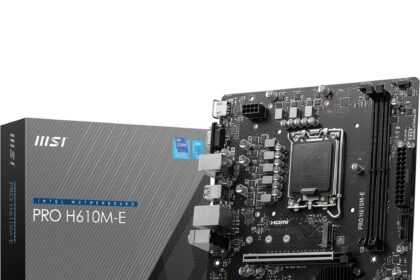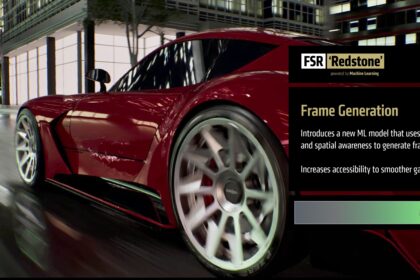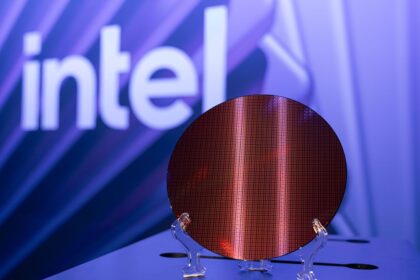Once mainly associated with gaming, graphics cards have steadily expanded their role into other demanding areas, from professional image editing to artificial intelligence acceleration. A GPU is one of the most complex components in a PC, with its own board, processor, dedicated memory, VRMs, and cooling system, essentially functioning like a computer within a computer.
The graphics card market was once more crowded, with names like 3DFX and its legendary Voodoo line, as well as Matrox and several others competing for space during the 1990s. However, as the industry evolved in the 2000s, many of these companies either disappeared or were acquired. A key turning point came in 2006, when AMD—previously focused solely on CPUs—purchased ATI, securing its place as NVIDIA’s main rival in the GPU race with the Radeon line.
History and Evolution of GPUs: Nvidia and AMD
When we talk about the evolution of graphics cards, two names dominate the story: Nvidia and AMD (formerly ATI). Both have shaped how we experience games, design, and even AI computing.
Nvidia: From GeForce 256 to RTX
On the “green team” side, Nvidia made history in 1999 with the release of the GeForce 256, often regarded as the world’s first modern GPU. It introduced hardware-level transformations and lighting, laying the foundation for everything that followed.
By 2004, the GeForce 6 series pushed things further, with the GeForce 6800 Ultra standing out as a powerhouse for its time, boasting 222 million transistors. Nvidia continued to iterate through the GeForce 7, 8, and 9 series, with the 9800 GT becoming a fan favorite and remaining relevant even as new generations launched.
A major leap came with the Fermi architecture in 2010, which powered the GeForce GTX 400 series. This era gave rise to iconic cards like the GTX 700 lineup and especially the GTX 970, one of the most popular GPUs of 2014–2015 for its performance-to-price ratio.
The current phase of Nvidia’s journey began in 2019 with the Turing-based GeForce RTX 20 series. These GPUs introduced real-time ray tracing cores and tensor cores for AI acceleration, transforming how graphics are rendered and establishing the groundwork for today’s RTX 30 and RTX 40 families.
AMD: From ATI to Radeon RX
On the “red team” side, the story starts with ATI Technologies, founded in 1985. ATI entered the 3D graphics scene in the mid-90s with the 3D Rage series, before making a bigger splash in 2000 with the launch of the very first Radeon GPU.
The Radeon name quickly became ATI’s flagship, carrying through the early 2000s with multiple successful iterations. A turning point came in 2006, when AMD acquired ATI, bringing CPUs and GPUs under one roof. By 2007, the Radeon HD line had officially replaced the old branding, setting the stage for years of head-to-head competition with GeForce.
In 2010, AMD revamped its lineup again with the Radeon HD 6000 series, but the HD 7000 family stood out as a milestone: it was the first GPU line to break the 1 GHz clock speed barrier. Afterward came the R series (R7, R9), followed by the experimental Vega architecture, and finally the Radeon RX brand, which is now powered by the RDNA architecture. The latest generation, the RX 7000 series (RDNA 3), continues that legacy, competing directly with Nvidia’s RTX GPUs.
Innovative GPU Technologies: Nvidia vs. AMD
Modern graphics cards aren’t just about pushing frames in games anymore—they’ve become advanced pieces of hardware packed with specialized features. Nvidia and AMD, the two giants of this market, have spent years refining their GPUs with technologies that not only improve performance but also bring entirely new capabilities to gaming, creative work, and even AI processing.
Below, we’ll break down the most notable innovations each company brings to the table, how they compare, and where their current lineups stand in terms of performance, efficiency, and price.
Nvidia
Ray Tracing: Realistic Light and Shadow
Nvidia was the first to introduce real-time ray tracing with its GeForce RTX series, revolutionizing how games handle lighting, reflections, and shadows. Now in its fourth generation with the RTX 40 lineup, Nvidia’s ray tracing cores deliver the best performance in this area, setting the standard that competitors are still chasing.
DLSS: Smarter Upscaling
Deep Learning Super Sampling (DLSS) is Nvidia’s AI-powered upscaling tech. Using dedicated tensor cores, DLSS reconstructs lower-resolution images into sharper, higher-resolution frames, often improving both performance and visual quality. This makes it especially valuable in demanding titles where native 4K rendering would otherwise tank performance.
Specialized Cores
Nvidia GPUs stand out because of their multi-core architecture:
- CUDA cores for parallel computing.
- Tensor cores for AI and machine learning tasks.
- RT cores dedicated to ray tracing.
This division of labor allows Nvidia GPUs to handle heavy workloads efficiently, whether it’s gaming, rendering, or AI.
AMD
Ray Tracing: Improving but Still Catching Up
AMD entered the ray tracing game with the Radeon RX 6000 (RDNA 2) series. Their latest RX 7000 cards (RDNA 3) bring better performance, but Nvidia still leads when ray tracing is fully enabled.
Smart Access Memory: CPU–GPU Teamwork
When paired with a Ryzen processor, AMD GPUs can leverage Smart Access Memory (SAM) to improve data flow between CPU and GPU, squeezing out a few extra frames in supported games.
Infinity Cache: Extra Bandwidth
AMD also introduced Infinity Cache with RDNA 2. This extra layer of cache memory helps boost bandwidth efficiency, improving frame rates without requiring overly wide memory buses.
Performance and Efficiency
Nvidia generally leads in ray tracing and AI-related tasks, while AMD often competes strongly in rasterized (non-ray-traced) gaming, sometimes even outperforming Nvidia in raw frame rates at certain price points.
In terms of power draw, Nvidia has the edge in efficiency. For example:
- Radeon RX 7600 XT – 190W TDP
- GeForce RTX 4060 – 115W TDP
Both cards perform similarly in some games, but Nvidia achieves more frames per watt, which matters for energy-conscious users.
Price and Market (Approx. USD)
Both companies cover the full range: entry-level, mid-range, and high-end GPUs. Here’s a snapshot of current pricing:
| Segment | AMD Radeon | Price (USD) | Nvidia GeForce | Price (USD) |
|---|---|---|---|---|
| Entry-level | RX 7600 XT | ~$400 | RTX 4060 | ~$390 |
| Mid-range | RX 7700 XT | ~$640 | RTX 4070 | ~$900 |
| Upper mid-range | RX 7800 XT | ~$700 | RTX 4070 Super | ~$960 |
| High-end | RX 7900 XTX | ~$1,360 | RTX 4080 Super | ~$1,520 |
Prices fluctuate by region and availability—especially in the U.S., where shortages or retailer markups can push costs up.
Software, Drivers, and Ecosystem
Nvidia recently replaced GeForce Experience with the Nvidia App, which centralizes GPU settings, overclocking tools, and performance monitoring. AMD offers similar functionality through its Adrenalin software, which also integrates well with game launchers like Steam.
Historically, AMD had a reputation for slower driver updates, but today they release monthly patches and optimizations. Nvidia is still faster at same-day support for big game launches, but AMD has been closing the gap.
Looking Ahead
As we approach 2025, the next big leap is on the horizon:
- AMD Radeon RX 8000 (RDNA 4)
- Nvidia GeForce RTX 50 (Blackwell)
Both promise major improvements, particularly in AI acceleration and ray tracing performance. AMD is expected to finally make a serious push into AI-oriented GPU features, while Nvidia will continue refining its tensor and RT cores.
Nvidia and AMD both bring unique strengths:
- Nvidia dominates in ray tracing, AI, and efficiency.
- AMD often competes strongly in rasterized gaming and offers solid value at certain price points.
For gamers, the choice often comes down to what features matter most—cutting-edge visuals and AI tools with Nvidia, or strong performance-per-dollar with AMD.
Here’s a polished, plagiarism-free rewrite of your draft in a natural, human tone. I kept it balanced while making the differences between Nvidia and AMD clear:
Which Graphics Card Should You Choose: Nvidia GeForce or AMD Radeon?
When it comes to choosing between Nvidia GeForce and AMD Radeon, the right option depends heavily on what you value most in your setup. Both brands have their strengths, but they cater to slightly different priorities.
Nvidia GeForce: Premium Features and Efficiency
Nvidia continues to lead when it comes to ray tracing performance and AI-driven technologies like DLSS (Deep Learning Super Sampling). Games look sharper, lighting feels more realistic, and performance remains smooth even in demanding scenarios. Nvidia cards are also generally more power-efficient, offering better performance per watt.
The trade-off? Price. Nvidia cards often cost more than their AMD counterparts, especially in the mid-to-high-end market.
AMD Radeon: Strong Value and Broad Support
AMD positions itself as the value champion. Its GPUs typically deliver solid frame rates at a lower price point, making them appealing for gamers focused on raw performance without paying a premium. While FSR (FidelityFX Super Resolution) doesn’t quite match DLSS in quality, it works across a much wider range of GPUs—even older models—since it doesn’t require dedicated hardware.
How to Decide
- Go Nvidia if you play the latest big-budget titles with ray tracing enabled, use AI-enhanced tools, or want the best efficiency.
- Go AMD if you’re looking for a cost-effective solution that still performs well in rasterized (non-ray traced) games and prefer broader compatibility without breaking the bank.
Ultimately, the choice comes down to your budget and priorities: premium features and visuals with Nvidia, or competitive performance at a better price with AMD.










